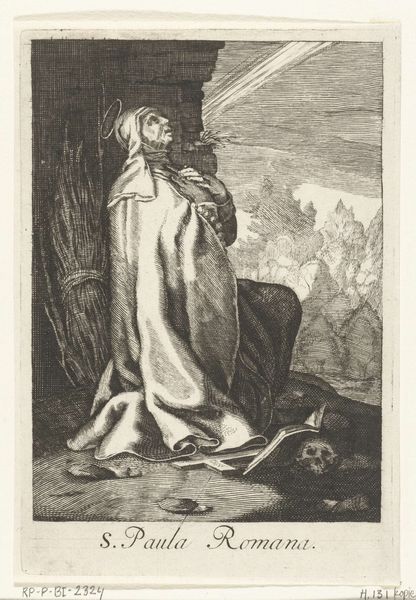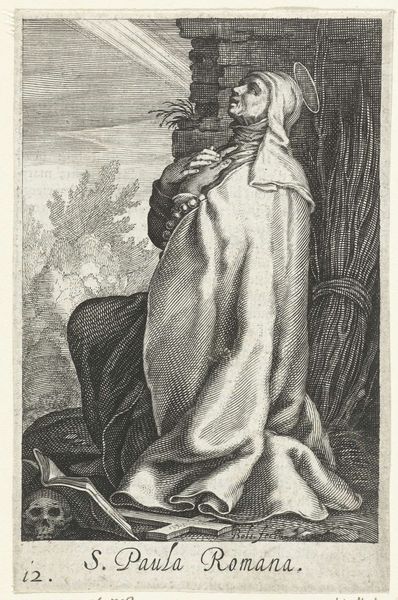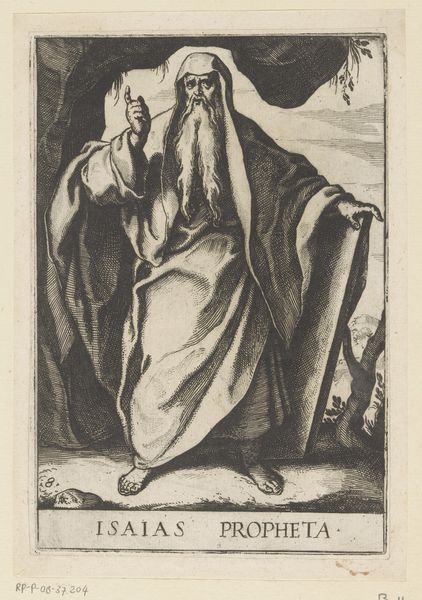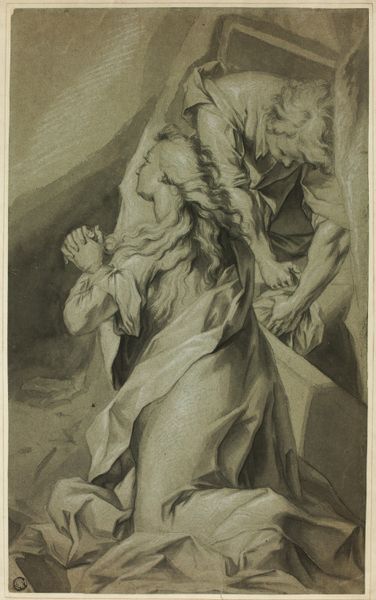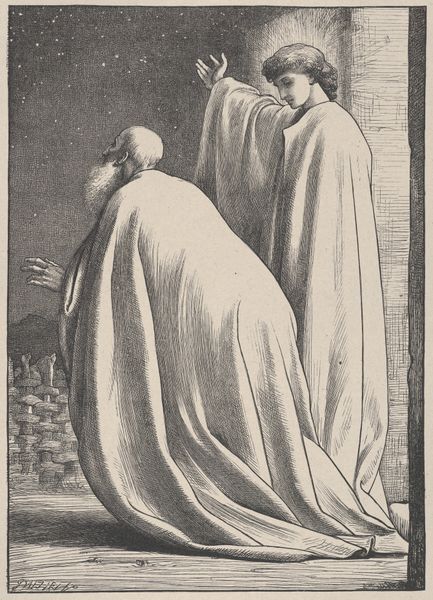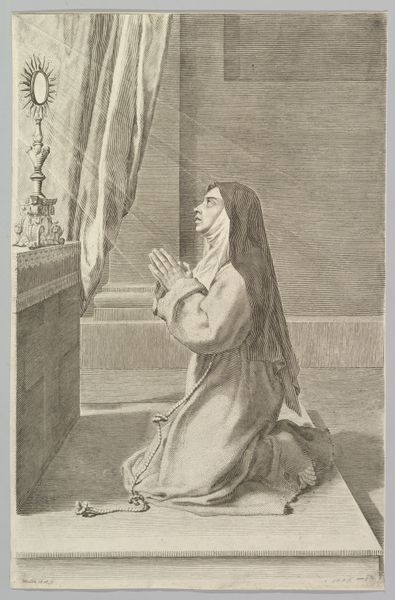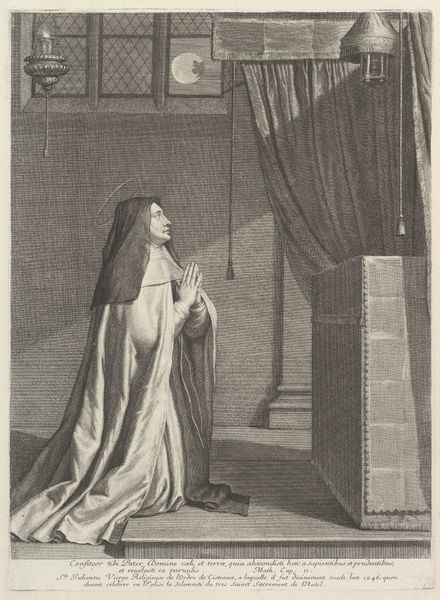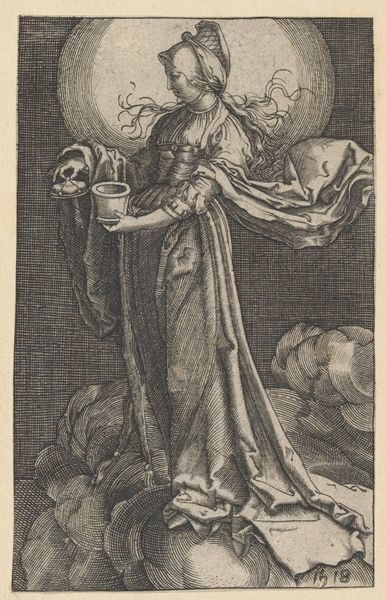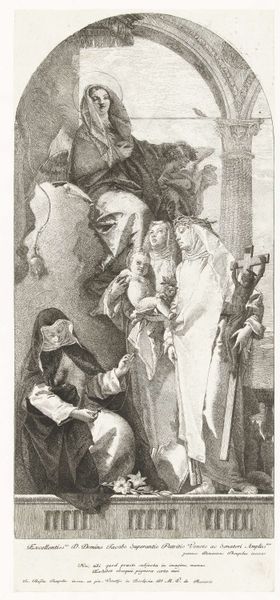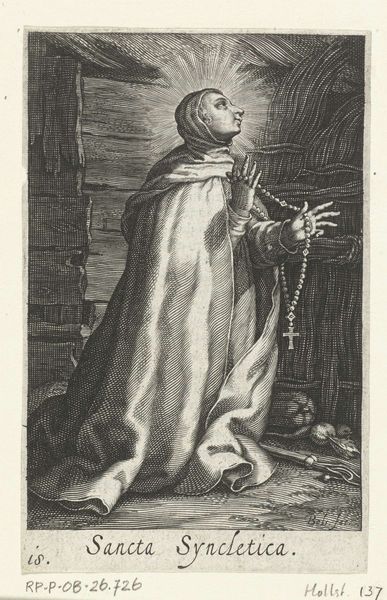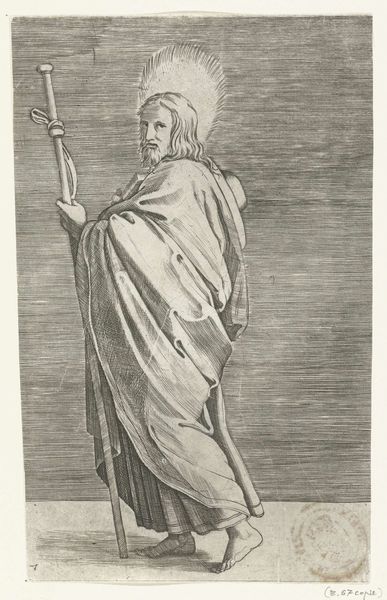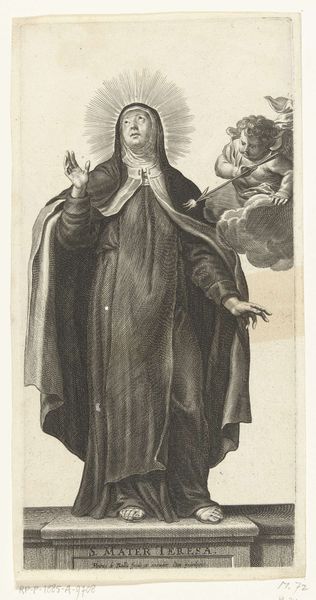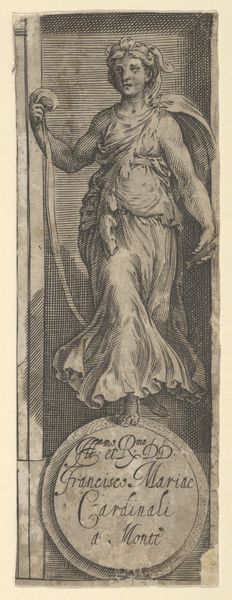
print, engraving
#
portrait
#
baroque
# print
#
history-painting
#
engraving
Dimensions: height 316 mm, width 202 mm
Copyright: Rijks Museum: Open Domain
Pieter van Schuppen made this print, "The Vision of Saint Teresa of Avila," using engraving techniques. Engraving involves meticulously cutting lines into a metal plate, inking the surface, and then wiping it clean so ink remains only in the incisions. The plate is then pressed onto paper, transferring the image. The crisp, precise lines we see here are a direct result of this process, which demands remarkable skill and control. The contrast between light and shadow is achieved through varying the density and depth of the engraved lines. Beyond its aesthetic qualities, the print speaks to a broader social and cultural context. As a reproductive medium, prints like this made art more accessible, but also relied upon the labour of skilled craftsmen to disseminate imagery. The engraving process itself, with its emphasis on precision and replication, reflects the emerging values of standardization and mass production in early modern Europe. By examining its materiality and production, we gain insight into the print's significance as both a work of art and a cultural artifact.
Comments
No comments
Be the first to comment and join the conversation on the ultimate creative platform.
